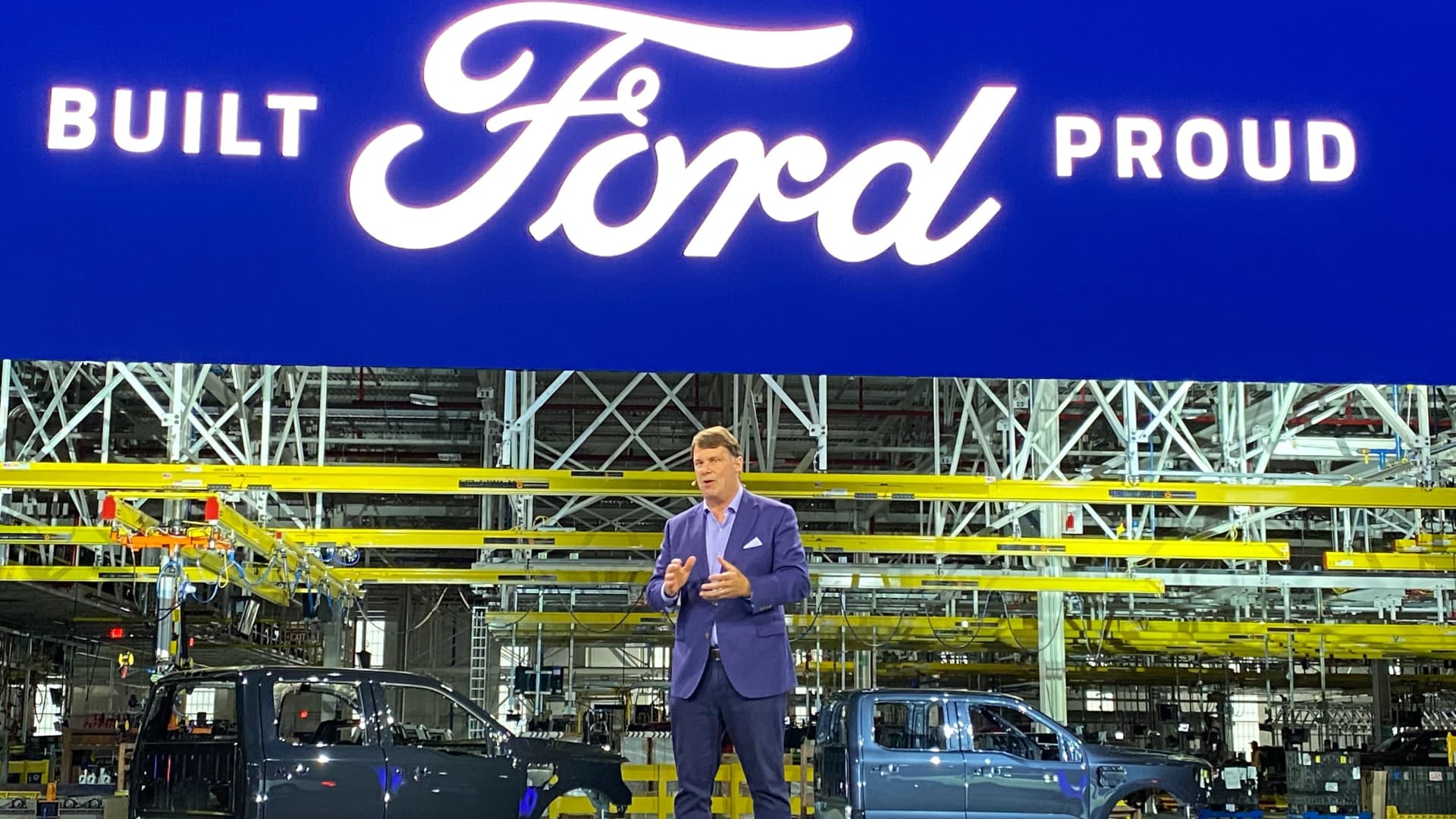Ford Motor Company said that its adjusted operating income more than tripled from a year ago, to $3.7 billion, as it was able to deliver more of its hottest new products to customers.
Ford also reiterated its previous guidance for the full year, and said that it will increase its quarterly dividend to 15 cents per share, the amount it paid before the Covid-19 pandemic.
Shares were up over 6% in extended trading after the news was released.
Here are the key numbers:
- Adjusted earnings per share: 68 cents, up from 12 cents in the second quarter of 2021. Wall Street analysts polled by Refinitiv had expected 45 cents.
- Automotive revenue: $37.91 billion, up from $24.13 billion in the second quarter of 2021. Analysts had expected $34.32 billion, on average, according to Refinitiv.
- Net income: $667 million versus $561 million in the second quarter of 2021.
Ford said that its adjusted earnings before interest and tax, or adjusted EBIT, jumped to $3.7 billion from $1.1 billion a year ago, as its margin improved to 9.3% from 3.9% on supply chain improvements and a more profitable mix of products sold. But despite that gain, Ford’s net income was just $667 million after it accounted for a $2.4 billion decline in the value of its stake in electric vehicle startup Rivian Automotive.
Ford’s U.S. sales were up 1.8% in the second quarter from a year ago, powered by an 8% year-over-year increase in sales of Ford brand SUVs and crossovers. Despite ongoing supply chain challenges, the automaker was able to build more of its popular models for its U.S. dealers than a year ago. That was good news for the company’s profit margins, as those incremental SUV sales largely replaced sales of Ford’s now-discontinued and less-profitable car models.
But, the company said, inflation — specifically, higher prices for key commodities and transportation — offset those gains to some extent.
Chief Financial Officer John Lawler said that despite inflation headwinds, Ford is standing by its previous guidance for the full year. It still expects adjusted EBIT of $11.5 billion to $12.5 billion for the year, which would represent 15% to 25% growth from last year, with adjusted free cash flow between $5.5 billion and $6.5 billion.
Ford is in the midst of a major restructuring, devoting more resources to electric vehicles and trimming $3 billion in annual costs from its internal-combustion development efforts. Starting next year, the company will report results for three business units: Ford Blue, representing its legacy internal-combustion business; Ford Model e, its electric vehicle business; and Ford Pro, its commercial vehicle operation.
Lawler reiterated that Ford is targeting a total company adjusted EBIT margin of 10% — and an 8% EBIT margin from its EVs — by 2026. He did acknowledge that it is not “cost competitive” with rivals at the moment, something that the company is working to change. But he declined to comment on a Wall Street Journal report that Ford is planning to lay off thousands of workers as part of its restructuring plan.
Ford said that its shipments in Europe were up about 22% from the year-earlier period to about 222,000 vehicles on supply chain improvements and strong demand for its commercial vehicles. But Ford’s wholesale shipments in China fell 24% in the second quarter, to about 114,000 vehicles, amid extended government-mandated shutdowns near Shanghai and in other parts of eastern China.
Ford said last week that it has secured 100% of the battery supplies it will need to deliver electric vehicles at a rate of 600,000 per year by the end of 2023, and that it’s on track to build 2 million a year by 2026.
